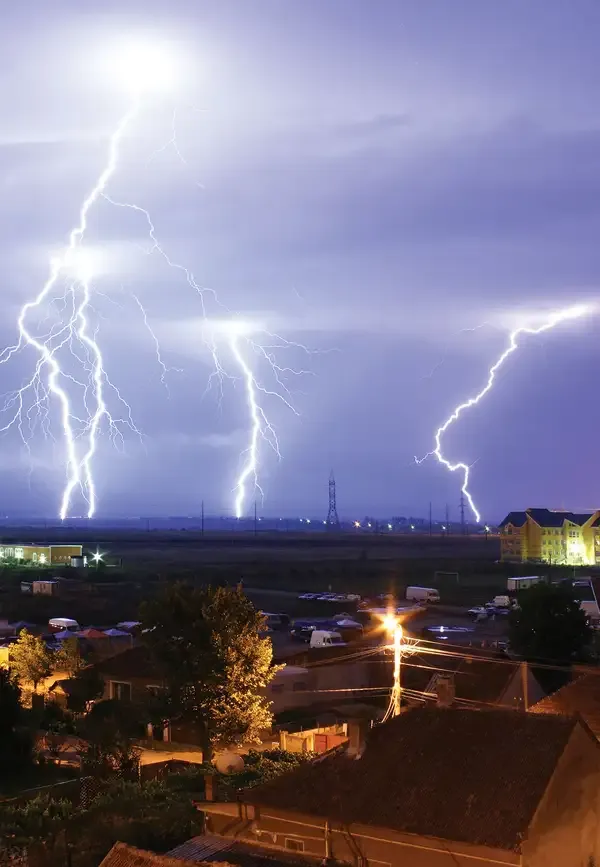- Home >
- Science
- > Technology
9 Ghostly Planets
Nine ghostly planets are mysterious celestial bodies that challenge our understanding of the universe. These enigmatic planets reside in distant solar systems, often shrouded in darkness and difficult to detect with conventional methods. Their eerie nature stems from their elusive orbits and faint visibility, which result in minimal interaction with their host stars. Despite their ghostly presence, they offer tantalizing insights into planetary formation and the diverse architectures of solar systems, expanding our knowledge of the cosmos.

Throughout the universe, there are numerous celestial bodies that remain shrouded in mystery and intrigue. Some of these planets exhibit ghostly characteristics that make them unique and captivating. In this article, we will explore nine ghostly planets, each with its own peculiar features and eerie atmospheres. Let's delve into the unknown realms of these fascinating worlds.
1. Gliese 581g
Located approximately 20 light-years away from Earth, Gliese 581g is a super-Earth that lies within its star's habitable zone. Its ghostly nature stems from the uncertainty surrounding its atmospheric composition. While it is believed to have the potential for liquid water, the exact conditions remain a mystery, leaving astronomers guessing about its ability to support life.
2. HD 189733b
This exoplanet is known for its striking blue color, which is often associated with ghostly imagery. HD 189733b is a gas giant situated about 64 light-years away. The planet experiences extreme weather conditions, including glass rain that can reach speeds of over 8,000 kilometers per hour. The haunting atmosphere of this world is a reminder of the powerful forces at play in the universe.
3. WASP-121b
WASP-121b is another gas giant that exhibits an eerie glow due to its intense heat. Orbiting its star every 1.3 days, this planet boasts temperatures exceeding 4,000 degrees Fahrenheit. The ghostly aspect of WASP-121b comes from its unique atmospheric features, which include a phenomenon known as "hot Jupiter," where the planet's atmosphere expands and creates a haunting visual spectacle.
4. TRAPPIST-1e
Part of the TRAPPIST-1 system, TRAPPIST-1e is one of the seven Earth-sized planets orbiting a cool dwarf star. Its ghostly reputation arises from the potential for liquid water on its surface. Scientists are particularly intrigued by the possibility of life on TRAPPIST-1e, but the planet's dense atmosphere poses questions about its habitability.
5. K2-18b
Located about 124 light-years away, K2-18b is another super-Earth that has garnered attention for its potential for liquid water. The planet orbits within the habitable zone of its star, creating an environment that could be conducive to life. The ghostly allure of K2-18b lies in the ongoing research into its atmospheric composition and the search for signs of life.
6. LHS 1140 b
LHS 1140 b is a rocky exoplanet situated about 40 light-years from Earth. Its ghostly nature is tied to its dense atmosphere, which is thought to contain a mixture of gases, including hydrogen and helium. The potential for water vapor in its atmosphere raises intriguing possibilities for habitability, making LHS 1140 b a prime candidate for further exploration.
7. Proxima Centauri b
As the closest known exoplanet to Earth, Proxima Centauri b resides in the habitable zone of its star. Its ghostly reputation stems from the challenges associated with its environment, including stellar flares from its host star. The potential for liquid water and the possibility of life on Proxima Centauri b continue to fuel discussions and research.
8. GJ 357 d
GJ 357 d is an intriguing super-Earth located approximately 31 light-years away. This planet orbits within the habitable zone of its star, where conditions may be right for liquid water. The ghostly aspect of GJ 357 d arises from the ongoing quest to understand its atmosphere and the potential for life beyond our solar system.
9. Kepler-186f
Kepler-186f is often regarded as one of the first Earth-sized planets found in the habitable zone of another star. Situated about 500 light-years away, its ghostly allure is due to the uncertainty surrounding its atmosphere and surface conditions. Scientists are eager to study Kepler-186f further to explore the potential for life and the mysteries it may hold.
Conclusion
The exploration of ghostly planets not only expands our understanding of the universe but also fuels our imagination about life beyond Earth. These nine celestial bodies, each with their own unique characteristics, represent the vast possibilities that lie in the cosmos. As technology advances and research continues, we may uncover the secrets of these ghostly worlds, illuminating the path to understanding our place in the universe.
As we venture deeper into space, the study of ghostly planets will undoubtedly become a focal point for astronomers and scientists alike. Their haunting atmospheres and potential for life make them a captivating subject of research and exploration.
For those interested in the universe's mysteries, the quest to understand these ghostly planets promises to be an exciting journey filled with discoveries and new insights.
| Planet Name | Distance from Earth (light-years) | Type | Potential for Life |
|---|---|---|---|
| Gliese 581g | 20 | Super-Earth | Possibly |
| HD 189733b | 64 | Gas Giant | No |
| WASP-121b | 850 | Gas Giant | No |
| TRAPPIST-1e | 40 | Super-Earth | Possibly |
| K2-18b | 124 | Super-Earth | Possibly |
| LHS 1140 b | 40 | Rocky Planet | Possibly |
| Proxima Centauri b | 4.2 | Super-Earth | Possibly |
| GJ 357 d | 31 | Super-Earth | Possibly |
| Kepler-186f | 500 | Earth-sized | Possibly |












